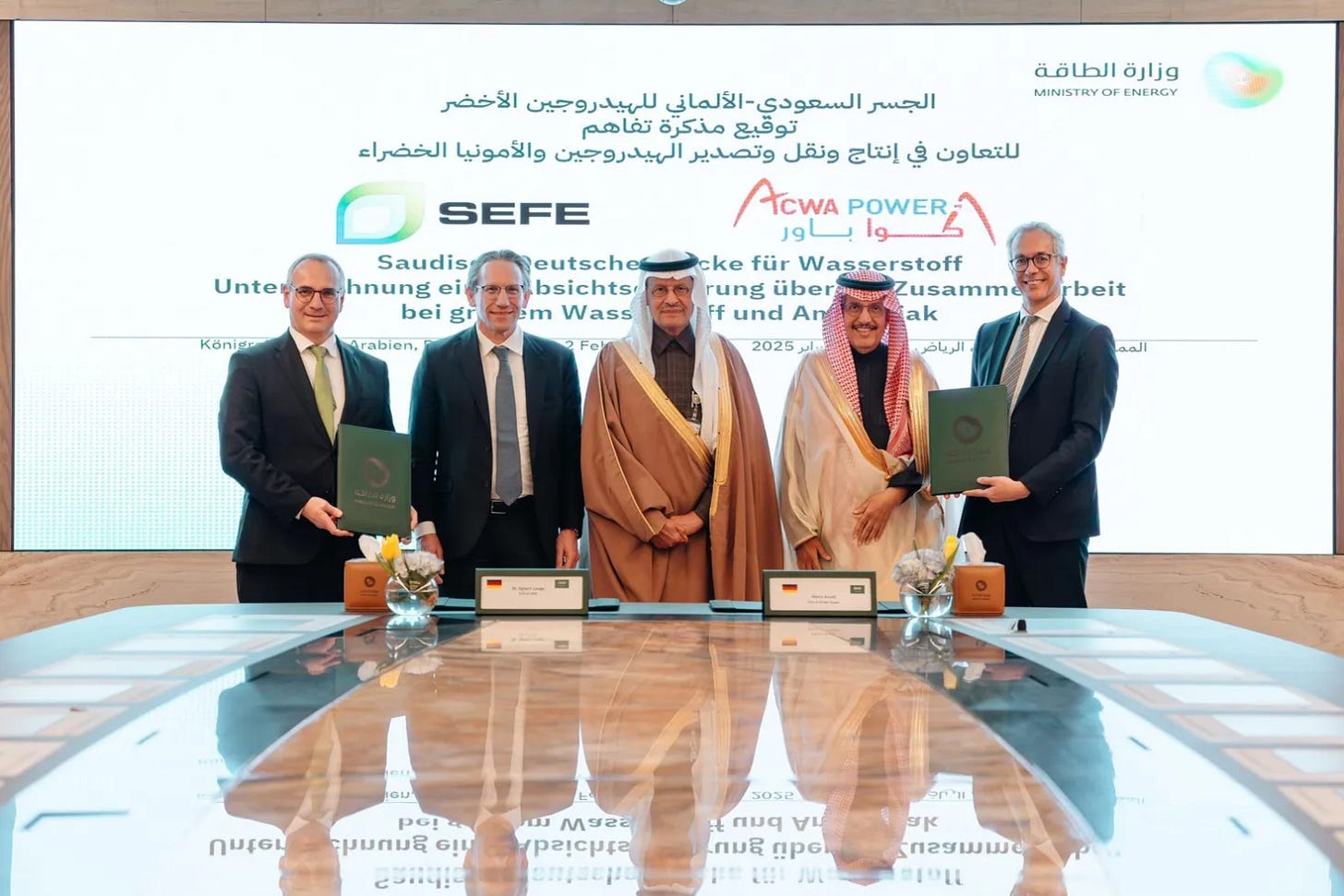Saudi Signs MoU with German SEFE, Advancing the IMEC Green Corridor
A successful clean energy infrastructure in the future could see Israel and Jordan playing a role in transporting Saudi energy to Europe, further strengthening regional cooperation and competition.
Saudi Arabia’s ACWA Power has signed a Memorandum of Understanding (MoU) with the Germany-based energy conglomerate Securing Energy for Europe GmbH (SEFE) to develop green hydrogen and ammonia projects aimed at transporting clean energy to the European market. This agreement marks a significant step toward advancing the greenification of the Gulf’s India-Middle East-Europe Economic Corridor (IMEC) vision, which Saudi Arabia has been heavily investing in, in line with Vision 2030 and the European Union’s net-zero 2050 target. This is further evidenced by the Kingdom's recent investments in the renewable energy sector, both locally, with the $8.4 billion Green Hydrogen Project in NEOM, and internationally, through multi-billion-pound projects across multiple countries. Although these green hydrogen endeavours have yet to be proven useful and their fruits are yet to be seen, the ACWA-SEFE deal signals renewed commitment to the prospective green future of Gulf-Europe relations.
An Ambiguous Commitment
Green hydrogen has become something of a buzzword, especially among politicians in the EU. This term refers to a form of clean energy that is environmentally friendly, producing zero carbon emissions. However, while green hydrogen holds great promise, it is also challenging and expensive to produce: despite the EU's ambitious goal of reaching net-zero carbon emissions by 2050, only 30% of energy consumed as of last year comes from clean sources like solar and wind power, with nuclear energy being the dominant contributor. When it comes to hydrogen, grey hydrogen remains the most widely consumed form, followed by blue hydrogen. Both rely on fossil fuels, are costly to produce, and highlight the challenges and overambition of the EU's green policies.
These challenges are also present in Saudi’s NEOM project, which has been heavily criticised as a failure; its green hydrogen plant, developed in collaboration with US-based Air Products, was initially touted as the largest of its kind in the world and was supposed to be operational by 2026 according to the original timeline. However, the lack of efficiency recently led to the eviction of three board members from Air Products, including former Chair Seifi Ghasemi. The company had previously announced it would pause investments in other hydrogen projects, with the demoted CEO stating, “We will not take any final investment decision on new projects until our current facilities are at least 75% loaded.” As of last month, the project had reportedly reached 60% completion, which was seemingly sufficient enough for major partner ACWA to move forward with last week’s MoU.
Saudi Green Hydrogen Deal: Egypt, Jordan, and Israel in Focus
It appears that the new ACWA-SEFE deal is the result of last year’s historic EU-Gulf Cooperation Council (GCC) Summit, marking a strategic move by the two regions toward a shared green energy future, which includes boosting trade relations and collaboration on renewable energy projects. By 2030, the plant aims to transport 200,000 tonnes of green hydrogen yearly to Germany. It could be that this new plant will use energy from the wide array of countries which Saudi has invested in, namely fellow IMEC transfer routes Egypt and Jordan. As part of Saudi Arabia's broader strategy, the IMEC also involves Israel, with Saudi Arabia having already normalised relations with the country, though not yet officially. A successful clean energy infrastructure in the future could see Israel and Jordan playing a role in transporting Saudi energy to Europe, further strengthening regional cooperation and competition.



